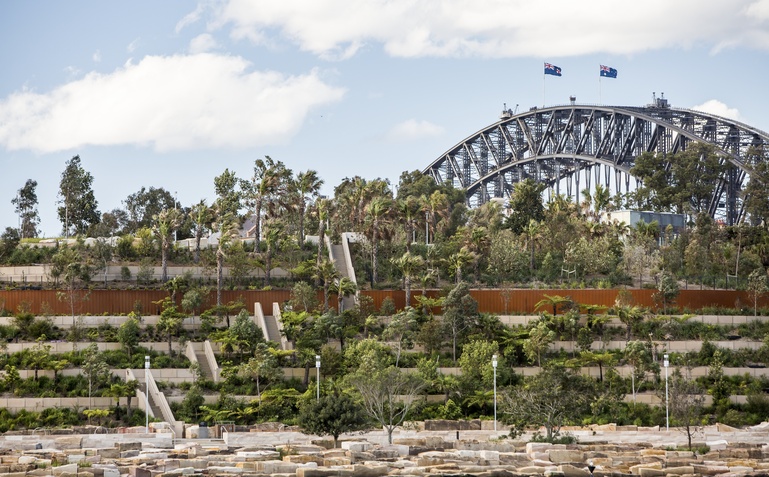The site on which Barangaroo is built was used for fishing and hunting by the Gadigal people, the traditional owners for the Sydney city region. Barangaroo is named in remembrance of one of the key Aboriginal leaders in the late 1700s – a powerful woman of great integrity and resilience.
The current Barangaroo precinct has regenerated a shipping wharf sitting on Sydney’s harbour to become a World Leading 6 Star Green Star precinct boasting office towers, retail spaces and residential complexes, wrapped up within six hectares of headland reserve.
Barangaroo Reserve is one of the three development areas within the precinct, covering six hectares which includes the foreshore, a swimming cove, lookouts, walking and cycling trails, and picnic spots. Remaining close to its cultural roots, the reserve was planned using historical maps and landscape points of the area to recreate the terrain which was once a popular fishing and hunting spot for the Gadigal People of the Eora Nation.
Beneath Barangaroo Reserve is a Cutaway cultural space and two levels of car park. An integrated water reuse system has been built below the carparks to capture, treat, store and reuse seepage and storm water for the irrigation of the Reserve.

Key features of the reserve:
- 75,000 native trees and shrubs were planted at Barangaroo
- The plants are native and endemic species to enhance the local area biodiversity
- 50% public space across the whole of Barangaroo
- On-site water treatment plant for construction
- Community gardens
- Marine habitat enhancement
- Rainwater capture
Darumu House biosolar roof innovation
In an Australian first, Barangaroo’s 6 Star Green Star rated Daramu House tested the positive impact of a biosolar roof in boosting energy savings, reducing emissions and increasing biodiversity through a study by researchers at the University of Sydney
The roof of Daramu House was designed to integrate photovoltaic (PV) solar system with a green roof system from Junglefy. The plants surrounding the solar panels lower the surface temperature, which improves the energy generation of the solar panels. The green roof was found to remove an additional 8.1 tonnes of carbon dioxide-equivalent greenhouse gases, reduced surface temperatures by as much as 20 degrees Celsius, boosted bird and insect life and reduced flows to stormwater drains.
Living seawalls at Barangaroo
In collaboration with Reef Design Lab, the Sydney Institute of Marine Science (SIMS) and Infrastructure NSW, Lendlease worked to enhance the habitat at Barangaroo South through the Living Seawalls Sydney Harbour Research Program.
Oyster shells and crushed sandstone were used to create 3D printed tiles mimicking nature marine structures like sponges and coral. Each of the 384 habitat tiles feature crevices and niches that mimic the surfaces that marine organisms need to thrive in their underwater habitat. Brown kelp was transplanted onto the tiles to attract marine species, and the tiles were installed on lightweight frames at varying levels under Barangaroo’s wharves.
The SIMS team will monitor the project and share the results to help inform urban planners, policymakers, designers and other stakeholders on who urban coastal communities can be protected and enhanced.
